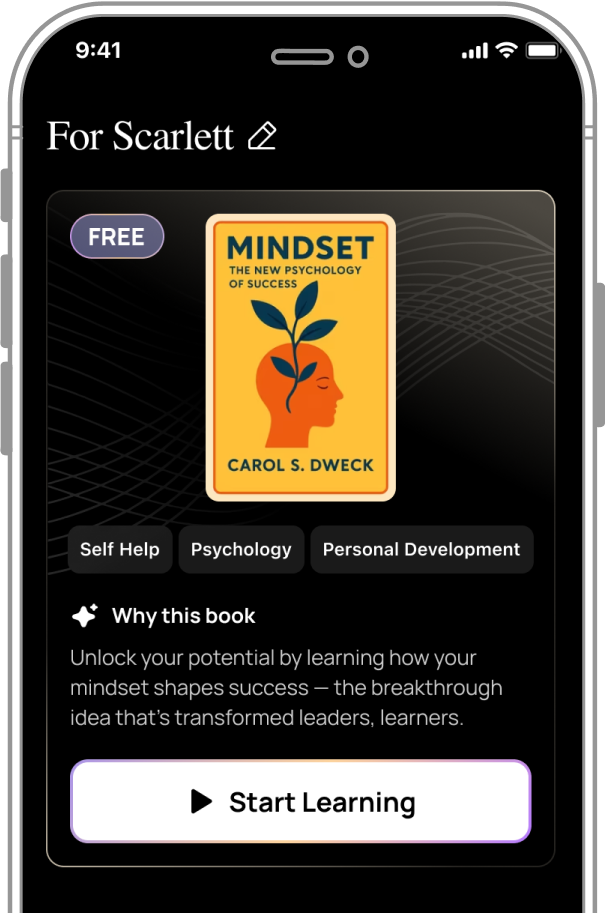What is
The Mom Test by Rob Fitzpatrick about?
The Mom Test is a practical guide to conducting customer interviews that elicit honest feedback, even from biased sources like friends or family. It teaches entrepreneurs to avoid leading questions, focus on past behaviors instead of hypotheticals, and identify genuine market needs. The book’s framework helps validate business ideas by prioritizing actionable insights over polite reassurance.
Who should read
The Mom Test?
Startup founders, product managers, and entrepreneurs at any stage will benefit from this book. It’s particularly valuable for those validating early-stage ideas, as it’s recommended by institutions like Harvard, MIT, and companies such as Shopify. Non-technical founders and innovators seeking unbiased customer insights will also find its strategies indispensable.
Is
The Mom Test worth reading?
Yes—it’s widely regarded as essential reading for early-stage entrepreneurs. Its actionable advice on avoiding biased feedback has made it a manual for training at firms like SkyScanner and a staple in university entrepreneurship programs. The concise, no-fluff approach ensures relevance across industries.
What are the key principles of
The Mom Test?
Three core rules guide the methodology:
- Talk about the customer’s life—not your idea.
- Ask about specifics (past actions) instead of generics or future intentions.
- Listen more and talk less to avoid steering responses.
These principles help uncover true pain points rather than false validation.
Why should you avoid hypothetical questions in customer interviews?
Hypotheticals (e.g., “Would you buy this?”) often yield misleading optimism. The Mom Test emphasizes asking about current behaviors (e.g., “How do you solve this now?”) and past investments (e.g., “What have you tried?”). This reveals whether the problem is urgent enough to justify a purchase.
How does
The Mom Test improve product development?
By focusing on real-world problems, the framework helps teams pivot early based on validated needs. For example, asking “What does this cost you today?” uncovers financial stakes, while “Who else should I talk to?” identifies broader trends. This reduces wasted time on unviable ideas.
What is a notable quote from
The Mom Test and its significance?
The line, “Every time you talk to someone, you should be asking a question which has the potential to completely destroy your currently imagined business,” underscores the book’s emphasis on seeking truth over validation. It encourages entrepreneurs to embrace uncomfortable insights.
How does
The Mom Test compare to other entrepreneurship books?
Unlike broader business guides, it zeroes in on customer discovery with a tactical, step-by-step approach. While books like Atomic Habits address behavior change, The Mom Test offers specialized tools for de-risking ideas through conversation.
Can
The Mom Test apply to non-startup contexts?
Yes—its principles suit any scenario requiring unbiased feedback, such as internal process improvements or nonprofit projects. By focusing on problem validation, it helps refine solutions in marketing, HR, or community initiatives.
What critiques exist about
The Mom Test?
Some note its narrow focus on early-stage validation, which may less directly address scaling or execution challenges. However, its targeted approach is widely praised for filling a critical gap in entrepreneurial education.
How does
The Mom Test relate to Rob Fitzpatrick’s other works?
Like Write Useful Books, it distills complex topics into actionable advice. Both emphasize clarity, practicality, and avoiding fluff—aligning with Fitzpatrick’s focus on creating “tools” rather than just theories.
What long-term lessons does
The Mom Test teach?
- Validation isn’t about agreement—it’s about uncovering risks.
- Silence is data—pay attention to what customers don’t say.
- Pinpoint urgency—if a problem isn’t costly now, it won’t drive purchases later.









